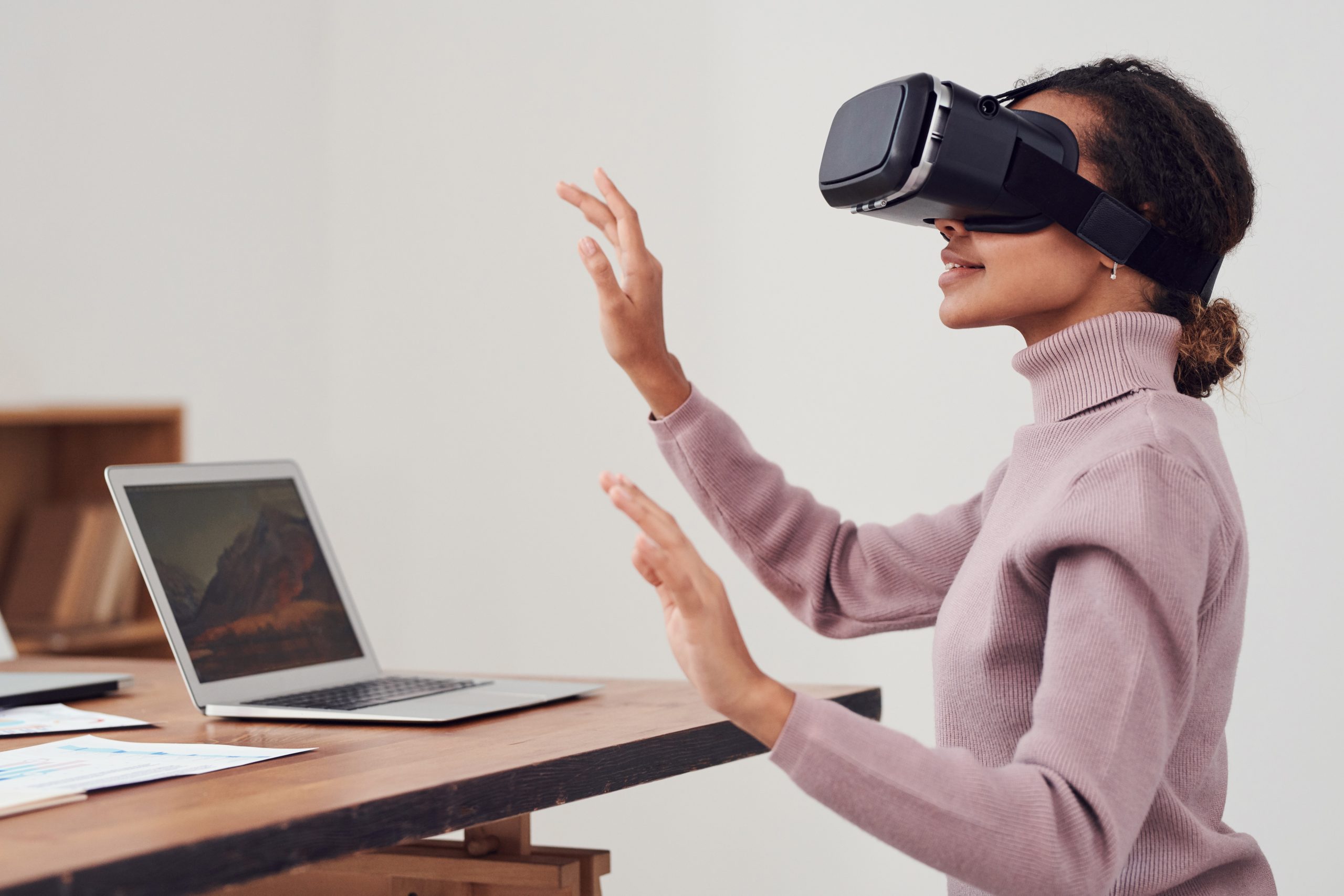Augmented Reality (AR) and Virtual Reality (VR) technologies have revolutionized the way businesses engage with their customers. By merging digital elements with the real world or creating entirely virtual environments, AR and VR provide immersive experiences that captivate audiences and enhance brand interactions. With the advent of Artificial Intelligence (AI), these technologies have reached new heights, offering advanced capabilities and personalization. In this comprehensive guide, we will explore the intersection of AR, VR, and AI in marketing, examining how AI is transforming immersive experiences and empowering businesses to connect with consumers in innovative ways.

1. Understanding Augmented Reality (AR) and Virtual Reality (VR)
AR overlays digital information onto the real world, enhancing the user’s perception and interaction with their surroundings. It can be experienced through mobile devices, smart glasses, or dedicated AR headsets. On the other hand, VR creates fully immersive, computer-generated environments that users can explore and interact with through headsets or virtual reality devices. Both technologies have gained significant traction across various industries, including marketing.
2. The Role of AI in AR and VR
AI plays a crucial role in enhancing AR and VR experiences, making them more interactive, personalized, and intelligent. AI algorithms can analyze vast amounts of data, interpret user behavior, and generate real-time responses, creating dynamic and adaptive experiences. AI-powered computer vision enables AR applications to recognize and track objects in the real world, enhancing the accuracy and realism of virtual overlays. In VR, AI algorithms can generate realistic virtual environments, simulate natural language interactions, and enable intelligent avatars or virtual characters.
3. Personalized Marketing Experiences
AI empowers marketers to deliver highly personalized AR and VR experiences tailored to individual preferences and behaviors. By analyzing user data, AI algorithms can create customized virtual environments, product recommendations, and interactive content based on user’s demographics, interests, and past interactions. This personalization helps businesses engage customers on a deeper level, increasing brand affinity and driving conversion rates.
4. Enhanced Product Visualization
AR and VR enable customers to visualize products in immersive ways, providing a more realistic and engaging shopping experience. AI algorithms can analyze product data, such as images, dimensions, and features, and generate accurate virtual representations. This allows customers to preview products in their desired environment, try different configurations, and make informed purchase decisions. For example, furniture retailers can use AR to overlay virtual furniture in a customer’s living room, enabling them to visualize how it would look before making a purchase.

5. Interactive Advertising and Gamification
AI-powered AR and VR experiences offer unique opportunities for interactive advertising and gamification. Marketers can create engaging virtual games, quizzes, or challenges that captivate users and promote their brands or products. AI algorithms can adapt the gameplay based on user performance and preferences, providing a dynamic and personalized experience. This gamification approach drives user engagement, increases brand awareness, and encourages social sharing.
6. Virtual Try-On and Fitting
AR and VR technologies combined with AI enable virtual try-on experiences, allowing customers to virtually try on clothes, accessories, or cosmetics. By leveraging AI algorithms for facial recognition and tracking, virtual try-on apps can accurately map and simulate the appearance of products on the user’s face or body. This eliminates the need for physical try-ons, enhances the convenience of shopping, and reduces return rates.
7. Data-driven Insights and Analytics
AI-powered AR and VR platforms collect valuable user data, providing businesses with insights into user behavior, preferences, and interactions. This data can be analyzed to optimize marketing strategies, improve user experiences, and drive business growth. AI algorithms can identify patterns, generate predictive models, and deliver actionable insights that inform marketing decisions, such as content creation, campaign targeting, and personalized recommendations.
8. Overcoming Challenges and Ethical Considerations
While the integration of AI in AR and VR offers numerous benefits, there are challenges and ethical considerations to address. Privacy concerns, data security, and potential biases in AI algorithms must be carefully managed to ensure user trust and compliance with regulations. Transparent data practices, user consent mechanisms, and ongoing monitoring of AI systems are essential to build and maintain consumer confidence.
The combination of AR, VR, and AI in marketing opens up new avenues for immersive and personalized experiences. AI enhances the capabilities of AR and VR technologies, making them more intelligent, interactive, and tailored to individual users. From personalized marketing experiences to enhanced product visualization, interactive advertising, and virtual try-on, businesses can leverage these technologies to captivate audiences, drive engagement, and build lasting connections. However, it is crucial to navigate the ethical considerations and challenges associated with AI and ensure user privacy and data security. As AI continues to advance, the possibilities for AR and VR in marketing will only expand, creating even more immersive and compelling experiences for consumers.




Comments (No)